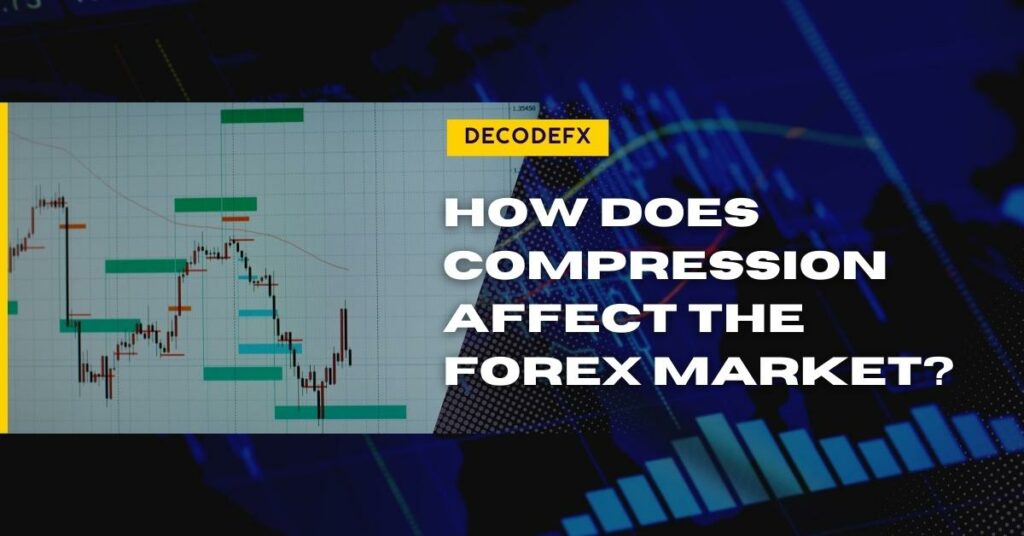Forex compression is a term used in the foreign exchange market to describe a period of consolidation or low volatility. It usually occurs before a major price movement and is characterized by periods of little or no trading volume. If you’re a forex trader, you need to be able to identify compressions so that you can take advantage of the market conditions they often precede. In this article, we’ll take a look at what compression is and how it affects the forex market. We’ll also discuss some strategies and tips for trading compressions.
How do people trade in the Forex market?
In the Forex market, traders attempt to profit from changes in the value of one currency against another. For example, if you think that the US dollar will weaken against the euro, you would sell dollars and buy euros. If your prediction comes true and the euro strengthens against the dollar, you would make a profit.
What is compression in Forex?
A compression in forex is a period of low volatility or consolidation. It usually occurs before a major price movement and is characterized by periods of little or no trading volume. If you ‘re a forex trader, you need to be able to identify compressions so that you can take advantage of the market conditions they often precede.
How to Identify Compressions in Forex Trading
There are a few things you can look for to identify compression in the forex market:
Low trading volume – during a compression, there is usually very little trading activity taking place. This can be seen on a price chart as a period of low volatility.
Tight trading range – during a compression, the price of a currency pair will often move within a very tight range. This can be seen on a price chart as a narrow band of prices.
Breakouts – once a compression has been identified, you can watch for breakouts to take place. A breakout is when the price of a currency pair moves outside of the trading range that has been established.
How do you trade forex compression?
Once you’ve identified a compression in the forex market, you can trade it by watching for breakouts to occur. A breakout is when the price of a currency pair moves outside of the trading range that has been established. To trade a breakout, you would place a buy or sell order just outside of the trading range.
Strategies to Use When Dealing with Compressions in Forex
There are a few different strategies you can use when trading compressions in forex:
1. Breakout Strategy
As we mentioned earlier, one strategy is to watch for breakouts to occur. To trade a breakout, you would place a buy or sell order just outside of the trading range. Breakouts can be tricky to trade, so be sure to use stop-loss and take-profit orders to protect your profits. There are 2 types of breakout:
False breakout
A false breakout occurs when the price breaks out of the range but then quickly returns back inside. This often happens during compression and can be used as a signal to enter the market.
Real breakout
When the price breaks out of the range and continues in that direction for some time. After a real breakout occurs, the market is likely to move in that direction for some time.
2. Chart Patterns
Another strategy you can use is to look for chart patterns that often form during compressions. Some common chart patterns include head and shoulders, triangles, and double bottoms. These patterns can give you an idea of where the market is heading once the compression ends.
When trading compressions in Forex, it can be helpful to use chart patterns to help you anticipate where the market might go. Some common chart patterns that may form during a compression include head and shoulders, triangles, and double bottoms. These patterns can give you an idea of where the market might heading once the compression ends.
For example, if you see a head and shoulders pattern forming, it might be an indication that the market is about to break out in the opposite direction. Similarly, if you see a triangle forming, it could suggest that the market is gearing up for a big move once the compression ends.
Of course, nothing is guaranteed when trading Forex, so always use stop-loss and take-profit orders to protect your profits.
3. Candlestick Patterns
Another way to trade compressions is by watching for candlestick patterns to form. Candlestick patterns are formed by the price action on a price chart and can give you an idea of where the market is heading. Some common candlestick patterns include the Doji, hammer, and shooting star.
Tips for Understanding Forex Compressions
Here are a few tips to help you understand forex compressions:
1. Compressions often occur before a major price movement. This means that if you can identify a compression, you may be able to predict where the market is headed.
2. Compressions are characterized by low trading volume and tight trading ranges.
3. Compressions can lead to reversals or continuations. You can use your trading strategies to determine whether the market is likely to reverse or continue in line with the trend once the compression is over.
Grasp More of What Forex Compressions are With DecodeFX
Trading compressions can be tricky but a reliable forex trading platform can improve your efficiency and results. Sign up on Decode Global and learn more about compressions through our demo and live trading accounts.

